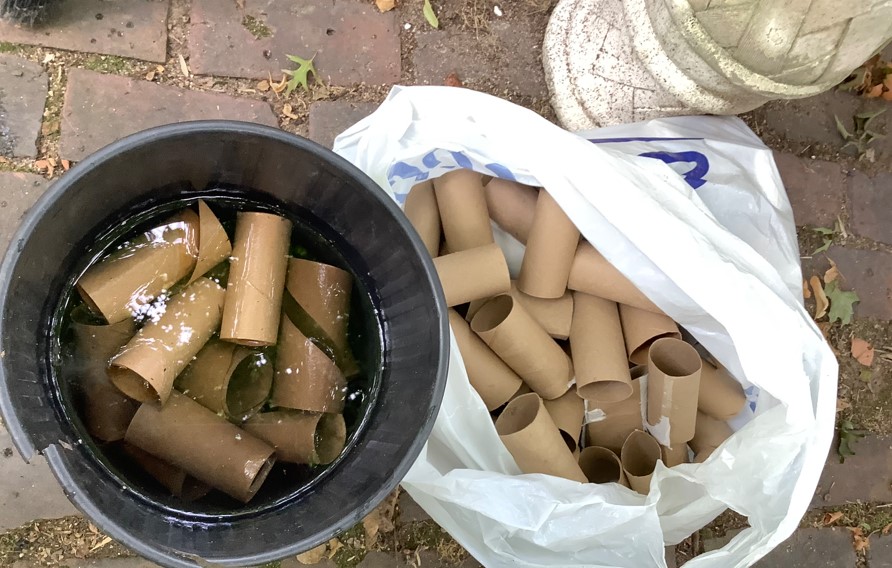What I Found Out: Composting Bleach-free Cardboard [View all]
I've been saving unbleached paper towel and toilet paper rolls. Everytime a roll is finished, it goes into a bag instead of the recycling. Over the winter, I accumulated a huge bag of such cardboard--about 3' wide and 4' tall. Plus a second bag about a third that size.
Four of my raised beds need organic material, and I was running out of material like leaves. Oh, I could have gone down to my bamboo forest which is loaded with great organic material, but the mosquitoes are thick as thieves and even mosquito repellent doesn't do the job there, so I'm trying to find other materials. It's so important to have that organic material in the soil because otherwise the water just washes straight through. We have a drought here in NJ, so every bit of water saving one can do counts.
But how to shred the cardboard? A web search revealed that plenty of people compost this kind of cardboard, but it appears they actually tear it up themselves. I wasn't about to engage in that much manual labor, so I thought about how I could get these cardboard rolls down to small bits.
The decision was to soak the rolls in water and then use the weedwacker on them.
I filled a few buckets of water half full and put in the rolls. As you can see in the pic below, the cardboard began to soften them almost immediately.

After soaking a bit, I put them in an old plastic tub and used my weedwacker on them. On the bottom of the tub you see the shredded cardboard that resulted from using the weedwacker:

I then transferred the chopped up cardboard to my raised bed, where I'll rake it to spread it around, and then add chopped leaves and whatever other compostable materials I can find.

The soil in these beds is organic and comes mixed with compost. The nursery that delivered it told me that it wouldn't have organic matter and I would have to add that on my own.
Here's what I learned:
1) the bits of cardboard will spatter all over the protector shield of the weedwacker, so have an old rag handy to immediately clean off the cardboard. Otherwise it hardens and would require re-wetting to get it off.
2. The cardboard softens quickly in water, so you can accomplish this task in one work session rather than having to wait for the next step. In all, this job took 45".
3. I was a little surprised at the small yield of material for the amount of cardboard I had. When all was said and done, it did not give me a great deal of organic material to put into the mix. Still, it's a better use of it than what is done in the present state of recycling, so I'll do it periodically.


